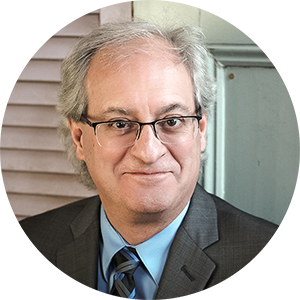A response to the 2024 National Technology Education Plan
In January, The U.S. Department of Education shared an update to the National Education Plan, its first update since pre-pandemic times. Throughout the 113-page plan, Universal Design for Learning (UDL) was mentioned 74 times as a means to help close the digital divide.
UDL and technology have a long history together, and the latest National Education Technology Plan makes the connection even stronger. Dr. David Rose, one of the founders of UDL, stated over a decade ago, “Digital technology has always been a cornerstone in the theory and practice of UDL. Without the development of digital media, it would have been impossible to conceive of flexible learning environments that could be tuned and adjusted to varied learners. As new technologies come along, they will enable new visions and innovations for learning designs” (Rose et al., 2014). This new plan shares many examples of ways that this can be done.
The plan outlines three critical issues—use, design, and access—that create barriers to technology use and presents essential steps for leaders to ensure accessibility for all learners, families/caregivers, and communities.
Our team at Novak Education, a company founded on the principles of inclusion and equity, sees this report as a beacon of light that will help the educational community take the steps necessary to ensure that all stakeholders have the tools and strategies they need to be successful. We wanted to share some of our thoughts on the report, and we encourage you to connect with us and share your own thoughts!
Digital Use Divide
In response to the Digital Use Divide, the inequitable difference between active or passive use of technology, Jeff Horwitz, shares, “Every day I’m talking to schools who are plopping their kids down in front of apps and sites like IXL, iReady, Zearn where the students are basically doing skill and drill lessons. Sometimes this is because the district requires them to use these tools. Sometimes it is because they need their students to be “independent,” a.k.a. docile, so they can do other work. There is a time and a place for these apps and this kind of work but I fear the frequency of this work
“For teachers to do better, they have to 1. be comfortable relinquishing control and 2. discover how learning could look differently with technology as a tool of creation rather than consumption.
"When technology is combined with a UDL lens, the student experience is transformed and redefined through personalization, accessibility, creativity, critical thinking, collaboration, and communication across physical borders."
"There is such an opportunity because students love watching their beloved creators on YouTube and TikTok and want to do the same thing, but we assume they have the skills to do so just because they are on devices so often. Learning how to edit a video can be just as powerful as editing one's own writing.” Jeff shares some important considerations for districts that are looking to address the digital use divide:
- Identify the skills and knowledge students should have upon completing each class.
- Design appropriate learning activities that align with these objectives.
- Equip teachers with the necessary training to develop these activities and implement UDL, ensuring students are provided with suitable options and skills when needed.
- Begin teaching these concepts at an early age, recognizing that young children have a greater capacity for learning than often anticipated.
Our team member Matt Bergman adds, “Although technology has the power to amplify learning, many of our students are not exposed to technology in the same ways. A digital divide has been created, as many of our students participate in one-size-fits-all ways of using technology in superficial and passive ways, often where technology is merely a substitute for paper and pencil. When technology is combined with a UDL lens, the student experience is transformed and redefined through personalization, accessibility, creativity, critical thinking, collaboration, and communication across physical borders.”
Digital Design Divide
The Digital Design Divide refers to the disparity in the ability to not only access but also create, design, and influence digital content and technologies. It concerns the gap between those educators who have the skills, resources, and opportunities to shape digital technologies and those who are merely consumers of these technologies.
Katie Novak argues that the National Ed Tech Plan's focus on the Digital Design Divide highlights one of many significant challenges within our education system: inconsistent access to professional development and support for educators in incorporating edtech into their teaching. She notes, “This discrepancy impacts teachers' abilities to adapt their instructional methods and address the diverse needs of all students. Given the increasing importance of technology in virtually every aspect of future careers and daily life, it is critical to ensure that all educators, especially those serving historically underserved students, possess the necessary skills, knowledge, and resources to employ edtech in a manner that fosters innovation, creativity, and inclusivity.”
Mirko Chardin adds the importance of school leaders modeling innovative technology use for students. He notes, “School leaders should lead by example by integrating technology into their daily practices and interactions with staff, both modeling and demonstrating its effectiveness, relevance, and usage beyond word processing and creating slideshows. By fostering a reflective culture of adult learning and skill-building around effective and innovative uses of digital resources, leaders can inspire their staff to more fluidly embrace utilizing these tools to enhance the teaching and learning experiences of students.”
The need to address the Digital Design Divide through UDL cannot be overstated. Recommendations in the plan involve creating a "Portrait of an Educator" to direct the design and delivery of inclusive learning experiences, promoting ongoing professional development, and providing educators with continuous, mastery-oriented feedback linked to student outcomes. Addressing these recommendations with a framework like UDL ensures a balance of educational equity and technological progress.
To narrow the Digital Design Divide, Matt Bergman adds:
- Consider “flipping” your faculty meetings. Share important announcements through email or video. Then, use staff meeting time for professional development and collaborative opportunities.
- Provide teachers with options for PD. Instead of a one-size-fits-all experience, provide teachers with 2 to 4 different pathways.
- Many Edtech companies are willing to provide trainings to better use their tools and systems, you just have to ask.
Digital Access Divide
The digital access divide refers to the gap between individuals who have access to modern information and communication technologies, such as the internet, computers, smartphones, and other digital devices, and those who do not. This divide extends beyond the availability of technology to include disparities in the ability to use and benefit from digital resources effectively.
Addressing the Digital Access Divide, our colleague Andratesha Fritzgerald emphasizes the importance of framing justice and equity as core elements, along with the necessary actions that follow. She shares, “As we name the challenges for educators and families, we must continue to name justice and equity as essential conditions that show up in our policy and program goals and the subsequent action steps. Building capacity for family and school partnership means recognizing the assets and strengths that families bring to the co-creation process.” shares, “One action step could be finding the expertise in your school community, especially among parents, when it comes to technology and technological shifts. Assume competence with students, but also with families, parents and caregivers”.
In releasing the report, the US Department of Education shared, “Digital equity is no longer a “nice-to-have” condition but a “must-have” to ensure that all may fully participate in the digital economy and society of today and tomorrow.” Making sure that all schools, teachers, and students have equal use, the ability to design, and access to digital tools and resources will not happen overnight. This report is a floor plan to inspire the work that needs to be done. Now it is time to put on our hard hats and start the construction. In working with our communities, colleagues, and schools - we can break down barriers and leverage technology as a tool that all learners can benefit from.
Where to go from here? Explore our professional development options and contact us to find the best plan for you.
💡 Explore these courses designed to close the digital divide.
- Institute for Equity Leadership - Master and apply effective communication, engagement, and planning strategies, focusing on dismantling barriers to create inclusive educational environments where all students experience equitable outcomes.
- Improving Accessibility with Tech - L
earn how to apply technology tools in an environment of choice and inclusivity.



